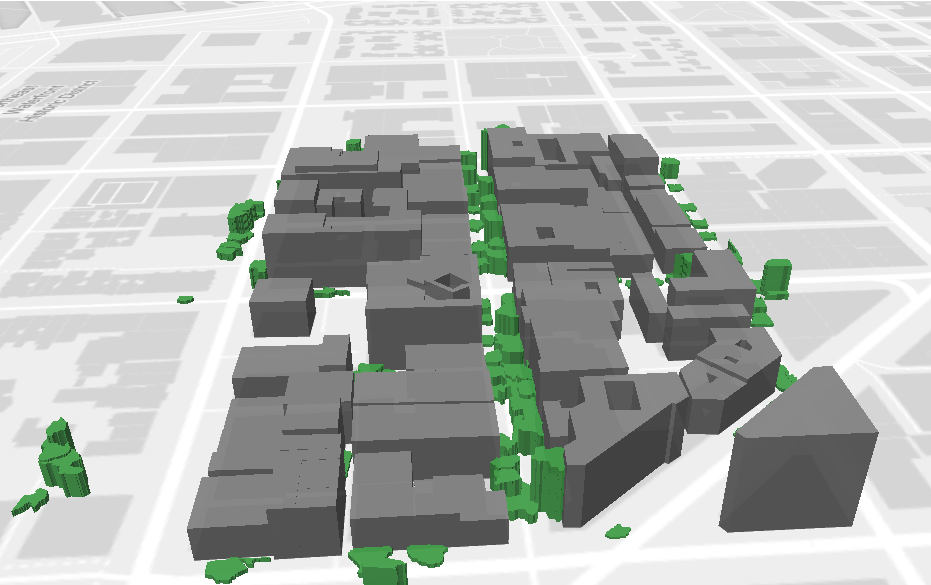There’s something exciting and hopeful about the start of a New Year and the opportunity to start with a blank slate. In the spirit of beginning 2019 renewed, we are busting some myths and misconceptions about Maxar and its family of companies.
Here’s to a fresh 2019!
Myth #1: Maxar is a brand new company.
Not so. Maxar is a parent company with a 60-year track record in space, just with a new name. Combined across the four businesses in the portfolio, we represent over a century of pushing the boundaries of what’s possible in space and finding innovative ways to bring space down to Earth for our customers.
Proof:
- The MDA-built Canadarm, one of Canada’s most famous contributions to space, made its debut on the Space Shuttle Columbia (STS-2) on November 13, 1981.
- In July 2013, SSL reached a milestone of 2,000 satellite years on orbit, and this July the 50th SSL-built satellite launched this decade for Telesat.
- When DigitalGlobe launched IKONOS in 1999, it was the first-ever commercial satellite to make high-resolution Earth imagery available to the world.
- We are committed to advancing the space industry and serving our customers, fueled by the purpose that drives us forward: To create connections and intelligence to Build a Better World.
Myth #2: MDA is a small aerospace company that only does business with the Canadian government.
Nope. Did you know MDA is not only Canada’s largest space company, but it is also growing internationally? MDA is partnering with the European Space Agency (ESA), UK Space Agency and up-and-coming players in the space industry on a number of exciting projects.
Proof:
- MDA is building the satellite communications subsystem for the European Space Agency’s (ESA) Columbus module on the International Space Station (ISS). Known as the Columbus Ka-band terminal (COLKa), this project will enhance and add new capabilities to the existing Columbus on-orbit and ground communications systems and create additional data transmission for the ISS.
- Neptec UK, now part of MDA, was selected to supply sensors for Effective Space, the UK company pioneering last-mile logistics in space. The sensors, which leverage MDA’s LIDAR and infrared camera, enable on-orbit servicing spacecraft to confidently and safely approach and dock with orbiting geostationary satellites.
- Scheduled to launch in 2021, MDA is building the landing sensor for the European Space Agency, ahead of a trip to the south polar region of the moon as part of the Luna Resource-1 Lander mission.

Myth #3: SSL only builds large commercial GEO communications satellites for services like TV broadcast, satellite radio and broadband internet.
Not so. While SSL is a leading provider of GEO communications satellites, did you know it is also a world leader in designing and building small satellites for Earth observation and communications, and sophisticated space robotics for exploration and on-orbit servicing and assembly?
Proof:
- SSL is building WorldView Legion, DigitalGlobe’s next-generation, high-resolution imaging constellation.
- Every robotic arm on the surface of Mars was built by SSL, including the arm that arrived on Mars last month on InSight Lander.
- The company is working on an innovative and unique on-orbit servicing mission with NASA’s Restore-L.
- SSL is working together with NASA to develop Dragonfly, for on-orbit robotic spacecraft assembly.

Myth #4: DigitalGlobe only provides overhead imagery of Earth from space.
Busted. In addition to operating its constellation of high-resolution satellites, DigitalGlobe has a geospatial machine learning product and an internal research and development team that develops algorithms to extract insights from imagery at scale.
Proof:
- In May, DigitalGlobe launched GBDX Notebooks to empower developers, data scientists and innovative minds around the world to solve complex problems at scale by simplifying access to Earth imagery and machine learning tools.
- DigitalGlobe leverages its 100-petabyte image library to provide actionable insights that can transform a broad spectrum of industries, such as identifying solar panels on 15 million buildings across Australia.
- In addition to utilizing its own geospatial data, DigitalGlobe also develops automation tools to unlock insights from other open source data, such as automating global water maps using Sentinel-2 imagery in GBDX Notebooks.

Myth #5: Radiant Solutions only does business with the U.S. Government.
Incorrect. While Radiant is proud to partner with a number of leading U.S. Defense and Intelligence agencies and allied nations, Radiant also helps hundreds of commercial customers with multisource geospatial sources and expertise to address a wide range of commercial use cases.
Proof:
- Radiant’s Marine Services enable commercial fishing organizations to unlock critical information about our changing oceans and fish more efficiently.
- The Weather Desk provides industry leading energy and agriculture weather consulting including special reports on key market-moving concerns.
- Urban feature extraction is just one example of how Radiant leverages automation to produce high-quality foundational geospatial information at a global scale.

Hopefully we’ve cleared up a few common myths that you might have encountered.
Having a fresh perspective at the beginning of the year is truly important to start off on the right foot. For more information about Maxar and our portfolio of commercial space brands and our unique perspective, visit: http://betterworld.maxar.com/.
Have a terrific 2019!